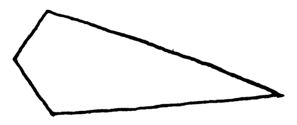From Benjamin Franklin to Peter Collinson, [2 March 1750]
To Peter Collinson9
MS not found; reprinted from The Gentleman’s Magazine, XX (1750), 208.
[March 2, 1750]1
I was very much pleased with some ingenious papers in the late Transactions on the subject of electricity.2
There is something however in the experiments of points, sending off, or drawing on, the electrical fire, which has not been fully explained, and which I intend to supply in my next. For the doctrine of points is very curious, and the effects of them truly wonderfull; and, from what I have observed on experiments, I am of opinion, that houses, ships, and even towns and churches may be effectually secured from the stroke of lightening by their means; for if, instead of the round balls of wood or metal, which are commonly placed on the tops of the weathercocks, vanes or spindles of churches, spires or masts, there should be put a rod of iron 8 or 10 feet in length, sharpen’d gradually to a point like a needle, and gilt to prevent rusting, or divided into a number of points, which would be better—the electrical fire would, I think, be drawn out of a cloud silently, before it could come near enough to strike; only a light would be seen at the point, like the sailors corpusante.*3 This may seem whimsical, but let it pass for the present, until I send the experiments at large.5
I shall further remark on the Transactions, &c. that the leaf gold suspended is not always nearest the non-electric, and that its situation depends on the number, acuteness, or situation of its points.6 By cutting a leaf into the shape underneath, it may be made to rest in the air, at any required distance from the electrified plate, from a quarter of an inch to a foot, while the nearest non-electric (the floor) may be at 3 or 4 feet distance. If it draws too near the electrified plate, make the top more sharp; if it keeps at too great a distance, make it more dull, or obtuse, by cutting off its points; then, by tryals and a little practice, it may be made to rest where desired.

9. Entitled in Gent. Mag.: “A curious Remark on Electricity; from a Gentleman in America; whose ingenious Letters on this Subject will soon be published in a separate Pamphlet, illustrated with Cuts. Extract of a Letter to Mr. P. C. F.R.S.”
1. This is believed to be the letter Collinson referred to in a letter to BF in June (see below, p. 484): “Per Next I may more particularly consider thine of March the 2d. There is Something very Marvelous in the Doctrine of Points.” Furthermore, since the May issue of Gent. Mag. appeared early in June, the letter could not have left Philadelphia after early April; but March is more likely.
2. Phil. Trans., No. 486 (XLV, 1748, 131–276), which was published Oct. 1749. Gent. Mag., XIX (1749), 480. This number contained articles on electricity from Abbé Nollet, John Ellicott, and Henry Baker. Ellicott’s experiments with electrical points, pp. 209–221, particularly interested BF.
3. Note the similarity in thought and language of this paragraph and sect. 20 of BF’s Opinions and Conjectures, July 29, 1750. Corposant (corpo santo): St. Elmo’s fire.
4. Brackets in the printed version.
5. At this point a footnote was inserted stating that the experiments would appear in the forthcoming publication of BF’s experiments. See his Experiments and Observations on Electricity, 1751, below.
6. See Ellicott’s experiments with leaf-silver in Phil. Trans., XLV (1748), 221–3.

![University of Virginia Press [link will open in a new window] University of Virginia Press](/lib/media/rotunda-white-on-blue.png)
